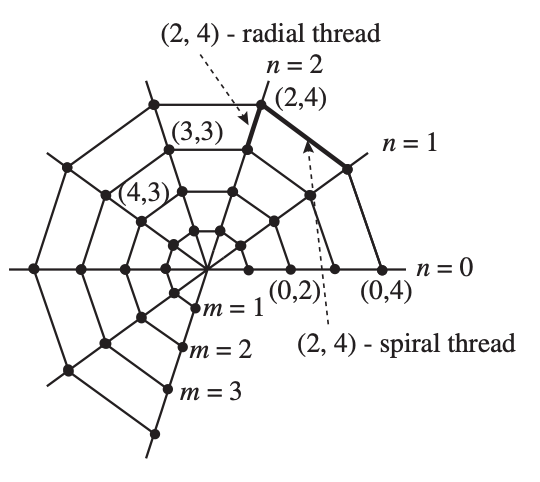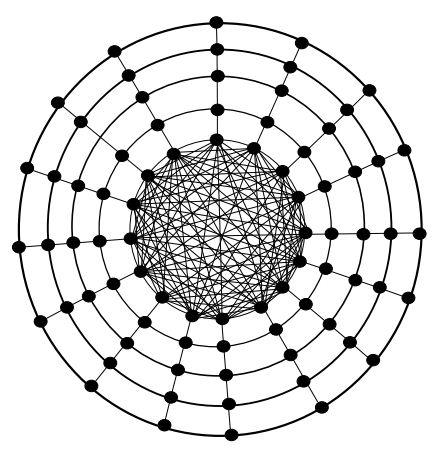Sometimes I see spider webs in very complex surroundings, like in the middle of twigs in a tree or in a bush. I keep thinking “if you understand the spider web, you understand the space around it”. What fascinates me, in some sense it gives a discrete view on the continuous space surrounding it.
I started to wonder what are good mathematical models for spider webs. Obvious candidates are geometric graphs embedded in surfaces, or rather in space. One could argue that Tutte’s Spring Theorem from 1963 is the base model: a planar geometric graph, given as the equilibrium position for a system of springs representing the edges of the graph. It is the minimum-energy configuration of the system of springs (see the picture for illustration). There are generalizations of such minimum-energy configurations for convex graph embeddings into space (Linial, Lovász, Wigderson 1988), where you place, for example, four vertices of the graph at the vertices of a simplex in $\mathbb R^3$.
I think such systems of springs are good models, because the threads of the spider web are elastic. However, when viewed as models for spider webs, I wonder whether these minimum-energy spring models are missing two aspects:
The purpose of spider webs is to catch prey, so I feel the ideal model should also consider
(A) maximizing the area covered (or the volume of the convex hull) and
(B) minimizing the distances between the edges.
To me, formalizing (A) and (B) and combining it with the minimum-energy principle for a system of springs would be the ideal mathematical model for spider webs.
Now, it is not obvious to me whether the minimum-energy principle alone determines a geometric graph satisfying (A) and/or (B)? Asking differently, if you add conditions like (A) or (B) to the minimum-energy principle, will this lead to different geometric graphs?
My second, broader question: Are you aware of any mathematical models developed explicitely to model spider webs? I checked MO and MSE and searched on the internet, but could not find anything. Maybe I am looking in the wrong fields, I wonder. Any help would be greatly appreciated!
References:
Tutte, W. T. (1963), "How to draw a graph", Proceedings of the London Mathematical Society, 13: 743–767, doi:10.1112/plms/s3-13.1.743
Linial, N.; Lovász, L.; Wigderson, A. (1988), "Rubber bands, convex embeddings and graph connectivity", Combinatorica, 8(1): 91–102, doi:10.1007/BF02122557
The picture is from Daniel Spielman’s lecture notes pdf on the web





